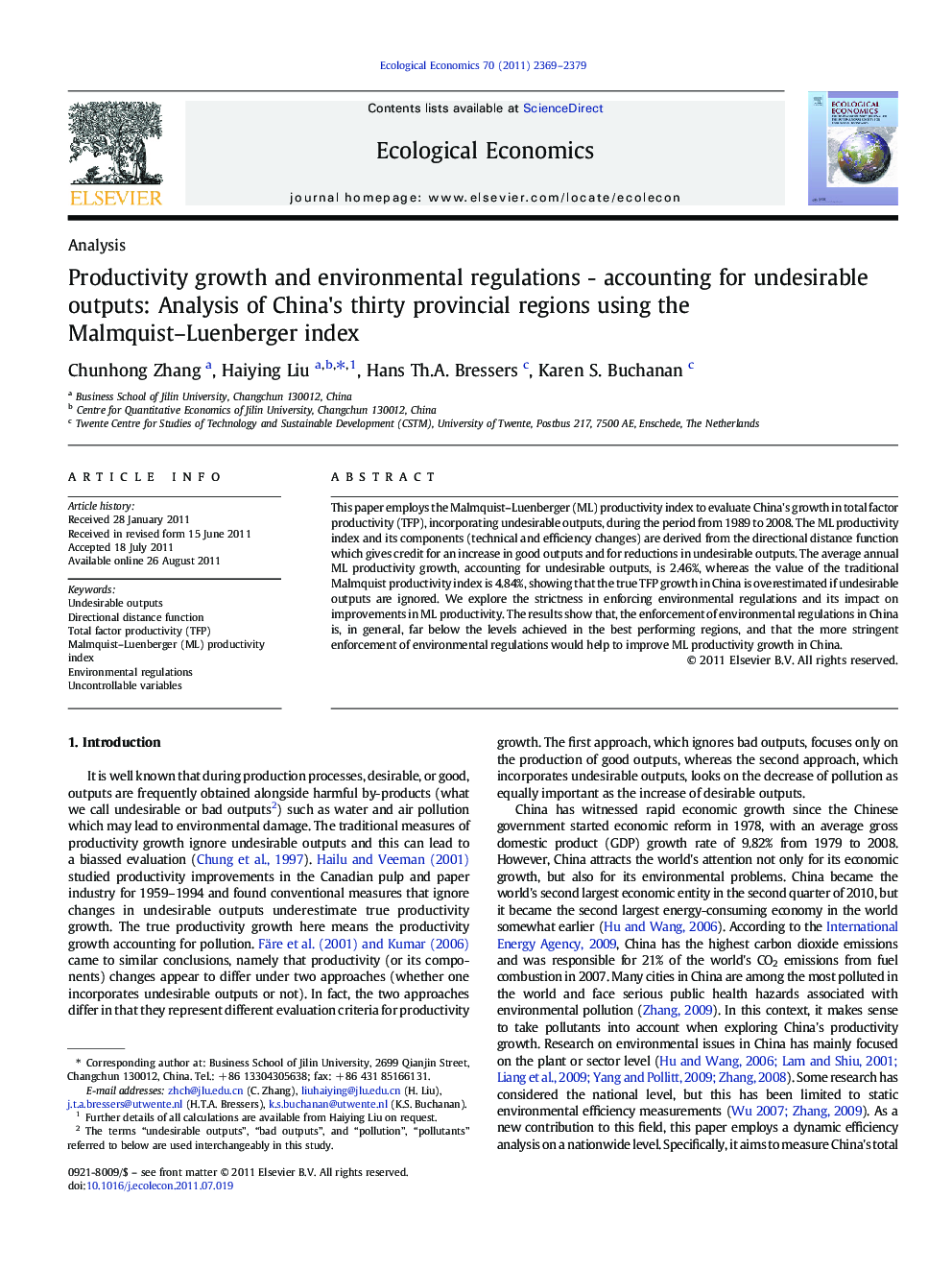| Article ID | Journal | Published Year | Pages | File Type |
|---|---|---|---|---|
| 5050503 | Ecological Economics | 2011 | 11 Pages |
This paper employs the Malmquist-Luenberger (ML) productivity index to evaluate China's growth in total factor productivity (TFP), incorporating undesirable outputs, during the period from 1989 to 2008. The ML productivity index and its components (technical and efficiency changes) are derived from the directional distance function which gives credit for an increase in good outputs and for reductions in undesirable outputs. The average annual ML productivity growth, accounting for undesirable outputs, is 2.46%, whereas the value of the traditional Malmquist productivity index is 4.84%, showing that the true TFP growth in China is overestimated if undesirable outputs are ignored. We explore the strictness in enforcing environmental regulations and its impact on improvements in ML productivity. The results show that, the enforcement of environmental regulations in China is, in general, far below the levels achieved in the best performing regions, and that the more stringent enforcement of environmental regulations would help to improve ML productivity growth in China.
⺠The true TFP growth in China is overestimated if undesirable outputs are ignored. ⺠Environmental regulations in China show considerable room for improved enforcement. ⺠More stringent enforcement of regulations would improve productivity growth in China.
